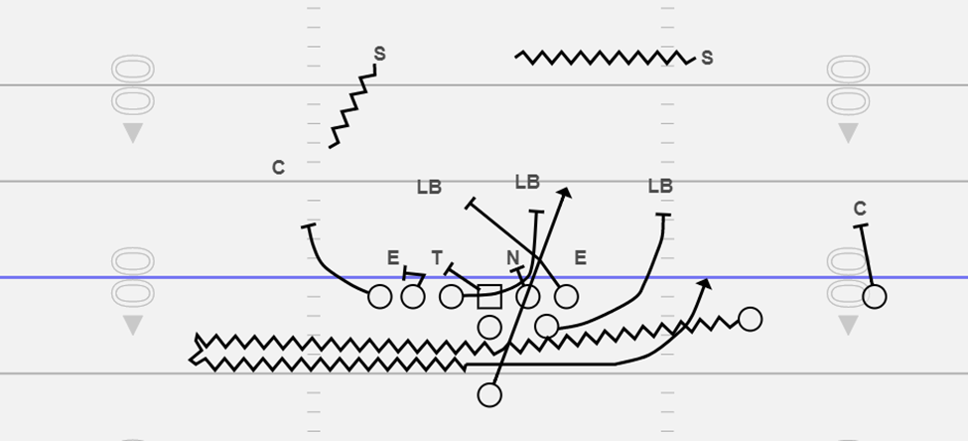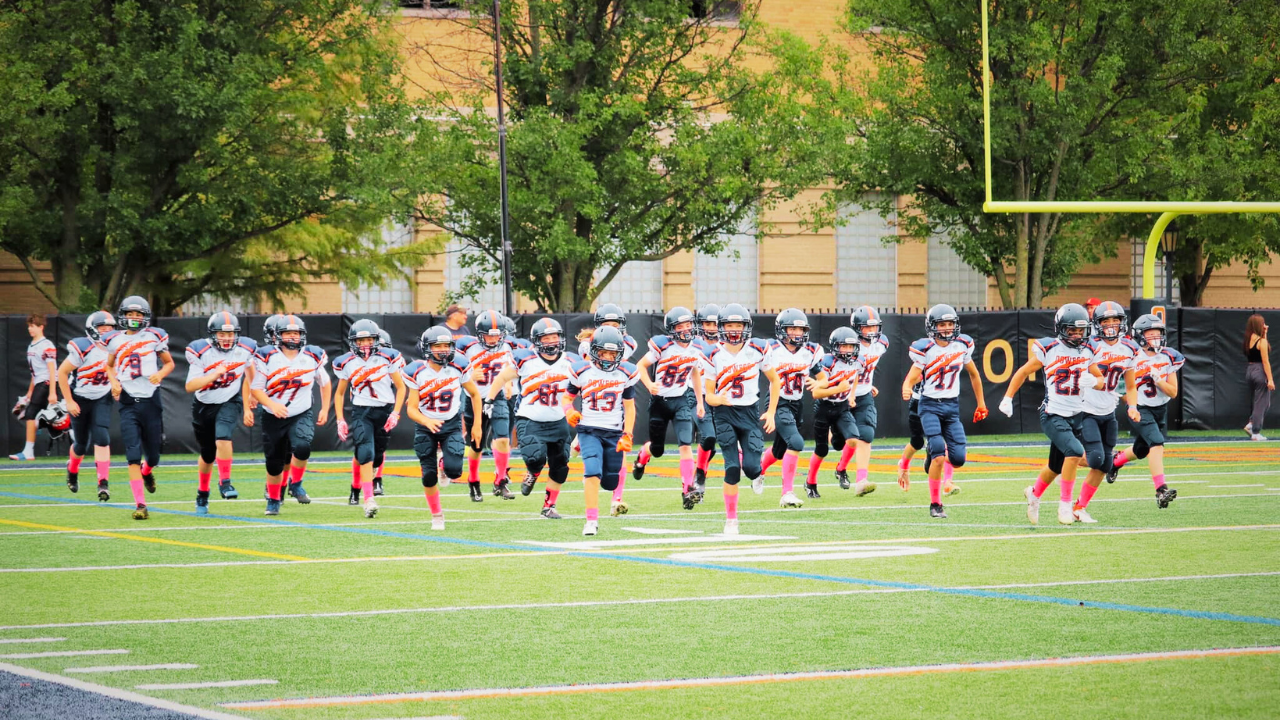Runway Formation Play Series | Part 2

In the previous article we discussed the Runway Formation and the simple ways to attack the defense across the full width of the field without adding any extra blocking assignments. In this next segment we will discuss how to attack the different defensive adjustments that tend to occur when you have success with the base plays in this formation.
Runway Formation Play Series | Part 2
Safety Rolling Down
When a defense is deciding how to defend jet motion there are a few different ways that the defense can adjust. The most popular one is to roll a Safety down to the side of the Jet Motion. This Safety now becomes the Force player, or the person responsible for stopping any outside run. To replace the Safety who has rolled down the other Safety will move over to the middle of the formation.
Related Content: Runway Series Part 1
This movement allows the offense to know a couple of things about the defense. First they are in some type of single high coverage. The major downside of any single high coverage is that it is not great at defending the four verticals passing play. The other thing that becomes obvious is that the defense has drilled and is expecting the Jet Sweep. This means that the linebackers are more likely to follow the Jet Sweep and allow the counter game to open up.
The first thing the offense can do when the defense rolls down a Safety to stop the Jet Sweep is use return motion to run the Jet Sweep to the vacated side. When the defense rolls down the Safety to stop the Jet Sweep on the first motion they open themselves up to a return motion jet sweep. Many times the defense does not spin down the Safety on the other side and the effect is a Jet Sweep to a side where there is no force player.
The next thing that defenses will do is take their Defensive End and begin sending him directly upfield. The goal here is that the defensive end will take out the Jet Sweep and force the ball carrier to turn the ball back in. From the defensive perspective if the Tight End is forced to block the End then that allows the Force player to make the tackle without having to deal with a lead blocker. The solution to this is to use the action of the Defensive End against him. If he is going to go upfield he is allowing himself to be blocked out. When we can block the Defensive End out it allows us to run the Counter play inside of him.
These simple wrinkles add options for the offensive play caller to exploit the adjustments that most defenses use to stop the Runway Formation. The key is to keep things simple for your players and use the defense’s adjustments against them.











